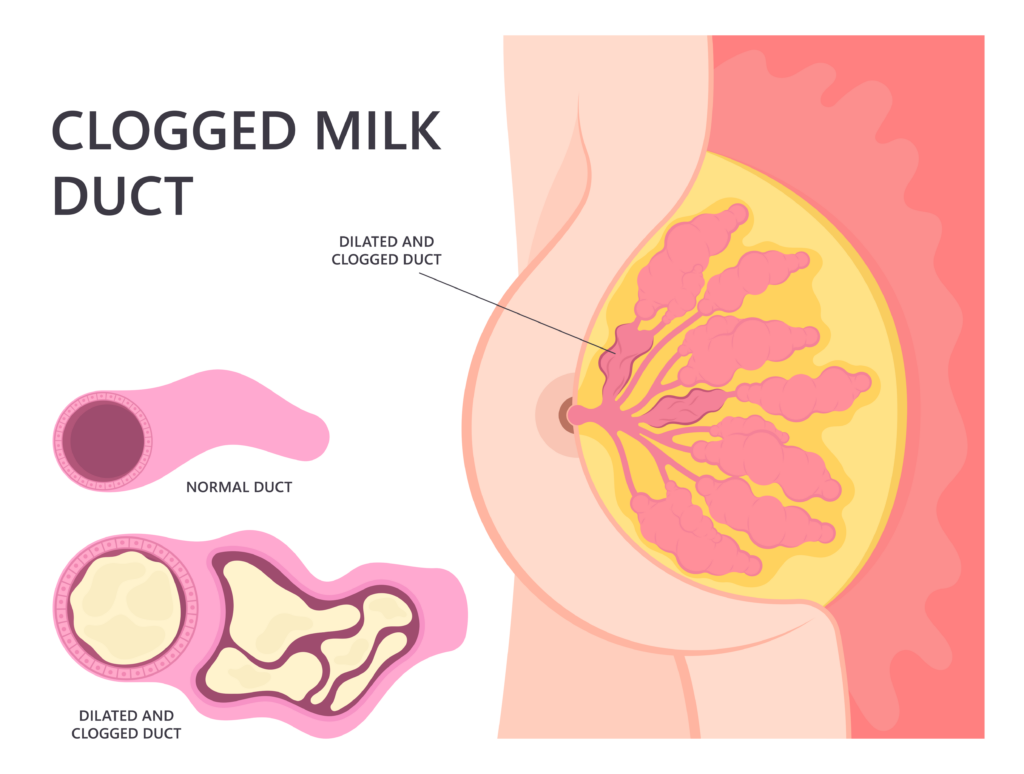For many new moms, breastfeeding is a special bonding experience and the optimal way to nourish their newborn baby. Sometimes, however, nursing mothers face challenges with the feeding process. One of the common disruptions on the breastfeeding journey is clogged milk ducts. While these blockages can cause extreme discomfort and pain as well as emotional trauma, fortunately, they can typically be relieved fairly quickly with proper care.
While physical therapists may not be the first medical expert you consider when seeking help with clogged milk ducts, PTs who specialize in women’s health can provide optimal support and effective solutions to this challenge.
Understanding the role of physical therapists.
As movement experts, physical therapists support women across their lifespan, optimizing functionality and enhancing their overall quality of life. Physical therapists offer skilled care to address a variety of musculoskeletal needs, including specialized interventions to support breastfeeding-related orthopedic concerns. Moreover, the expertise and skills of physical therapists can be of significant advantage to nursing mothers dealing with a clogged milk duct or noninfectious mastitis.
By providing education, ergonomic assessments, manual techniques, exercise recommendations and stress reduction techniques, physical therapists can play a vital role in ensuring the comfort and success of breastfeeding.
What is a clogged milk duct?
It is important, when experiencing a clogged milk duct, to understand what is happening.
This condition occurs when the flow of breast milk is obstructed – often due to not being able to fully drain the milk supply during feeding – causing a back-up of milk along the mammillary ducts.
It can occur if a baby does not have a successful latch or does not feed for long enough, if feeding sessions are interrupted or skipped, as well as if a mom is under increased stress.

What are the symptoms of a clogged milk duct?
The symptoms of a clogged milk duct commonly include a red, tender area on the breast, often including a firm, painful lump in the breast tissue. There can be heat and swelling or inflammation as well. The condition also presents with slow milk flow, which can lead to a fussy, frustrated baby and a stressed mama. Additionally, the mother may experience extreme pain during feeding or pumping – particularly during letdown – that subsides as the pressure is slowly relieved.
If a clogged milk duct is left unresolved, mastitis or a breast abscess can form. Fortunately, there are several ways physical therapists can help.
Assessment and education are fundamental to resolving clogged milk ducts, as well as to preventing recurrence.
Women’s Health Physical Therapists work closely with lactation specialists, collaborating in guidance to nursing moms. Together they work to ensure that the infant is positioned optimally for feeding and is latching effectively.
If an infant struggles to latch, pediatricians and lactation consultants will assess for tongue tie, a condition that restricts the tongue’s range of motion.
When a baby is born with tongue tie, a short, tight band of tissue tethers the tongue’s tip to the floor of the mouth. Because a baby uses the jaw, gums and tongue to pull the milk out of the nipple, this condition can inhibit their ability to receive a satisfying volume of milk at a fast enough pace. In this situation, the breast is not effectively drained which can lead to a clogged milk duct.

In the absence of tongue tie, a poor latch can often be associated with poor posture or body mechanics while breastfeeding. Physical therapists can assess these components and make corrections to reduce strain on the mother’s body and help facilitate optimal milk flow.
Physical therapy for clogged milk ducts.
Various manual therapy techniques can help alleviate clogged milk ducts.
In clinic, physical therapists often apply heat therapy and gentle massage to the affected breast to increase circulation of the tissue and assist in clearing the blockage while reducing pain and inflammation. Therapeutic ultrasound, which applies sound waves and gentle heat, is also an effective treatment option to break up a blockage and clear a clogged duct.
It’s important to follow any type of manual therapy treatment with an immediate feeding or pumping session to completely drain the milk once it has been released from the blockage.
Furthermore, despite the pain it may cause, draining the milk is a key aspect of clearing a blockage. Avoiding feeding or pumping while dealing with a clogged milk duct will only exasperate the situation.
Nursing moms can successfully continue manual therapy independently, utilizing warm, moist compresses and massage techniques that mirror the treatment they received from their therapist.
Strength and flexibility support successful breastfeeding.
Muscle imbalances can exasperate breastfeeding challenges, including the occurrence of clogged milk ducts. Prescribed exercises and stretches can address weak and tight muscles, improving posture and a mother’s ability to comfortably maintain proper nursing position for extended periods, ensuring their baby has time to adequately drain each breast – the most important factor in avoiding clogged milk ducts.

Enhancing breastfeeding success through relaxation techniques.
Stress can adversely affect a nursing mother’s milk production and letdown reflex, which can lead to clogged milk ducts. Physical therapists can help ward off the negative effects of stress by teaching deep breathing, mindfulness and other management techniques.
If a mother’s stress has resulted from a clogged milk duct, her physical therapist will also help by reinforcing the importance of hydration, nutrition, movement and sleep and by creating a customized plan of care that incorporates each of these factors. Focusing on these aspects of their health can help new mothers maintain a healthy milk supply and reduce the chances of developing a clogged milk duct.

Clogged milk ducts can be distressing for nursing mothers, but physical therapists – along with lactation specialists and pediatricians – can provide support and relief to patients struggling to overcome this challenge.
If you’re a nursing mom struggling with clogged milk ducts, consider consulting a physical therapist experienced in women’s health or lactation support.
Remember, seeking help early can lead to quicker relief and a more enjoyable breastfeeding experience for you and your baby.
Physical therapy for new mothers
Research shows that being active and working with a physical therapist after having a baby provides many benefits for new moms. A PT can help you in the recovery process after childbirth and provide optimal care for conditions such as clogged milk ducts. Make your postpartum physical therapy appointment today!



